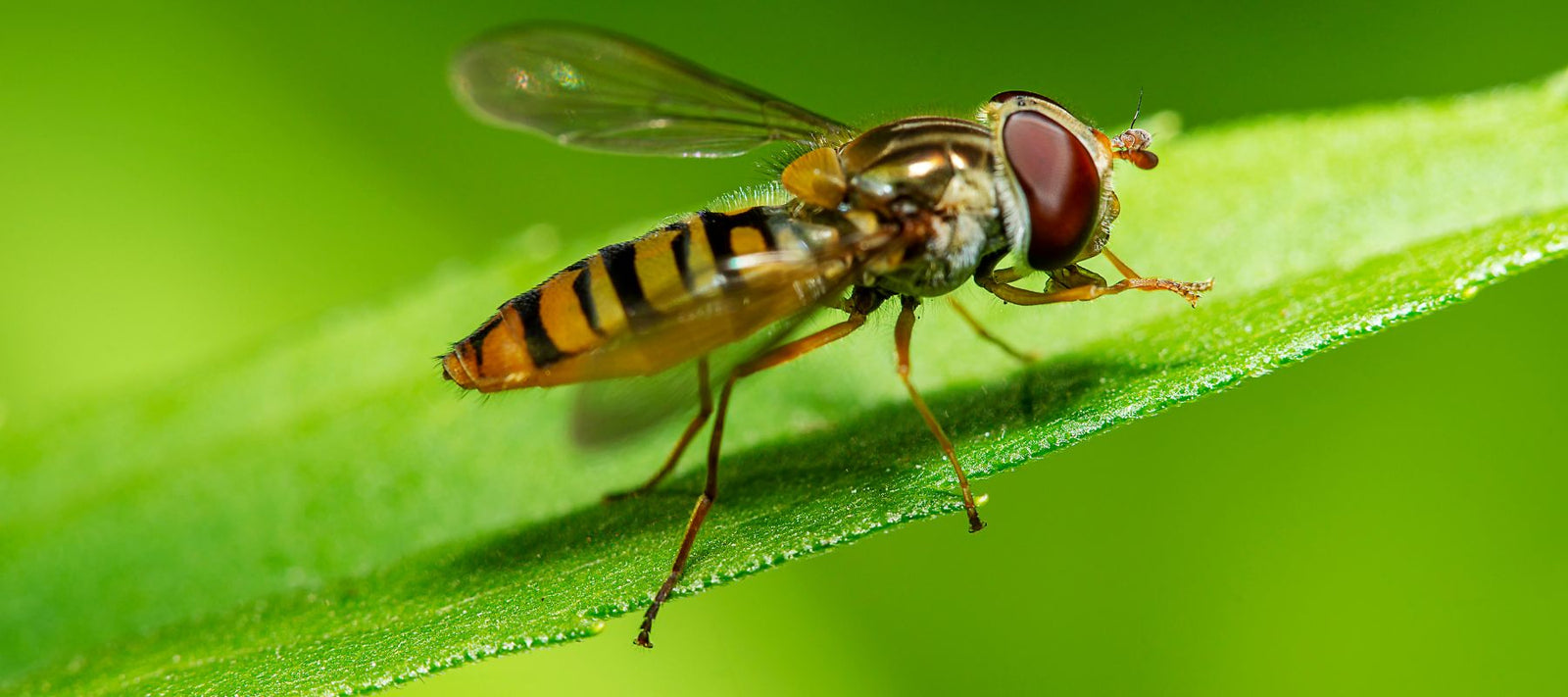
Hoverflies, those fascinating creatures often mistaken for bees or wasps, belong to a remarkable family of insects known as Syrphoidea. With approximately 6,000 diverse species, these winged wonders can be spotted on every continent except the frosty realms of Antarctica. But what makes these creatures truly captivating is the duality that runs through their existence.
All hoverflies share a common adult diet – nectar-sipping from a kaleidoscope of flowers, an activity that turns them into unsung heroes of pollination, contributing to the lush beauty of gardens and ecosystems alike. It is during the larvae stage, however, that the hoverflies reveal their two-fold purpose.
In one corner, you have the saprophagous larvae, nature's cleanup crew, voraciously feasting on decaying plant and animal matter. These little organic recyclers play an essential role in maintaining ecological balance.
In the other corner, there are the insectivorous larvae, the formidable predators of the insect world. Hoverfly larvae, armed with insatiable appetites, target garden pests like Aphids and Thrips. They lay their eggs near these colonies, and when hatched, the larvae embark on a relentless quest to devour these garden nuisances, protecting your plants with ruthless efficiency.
For Australian gardeners, the presence of primarily insectivorous hoverfly species is a stroke of luck. These garden allies ensure that your green haven remains pest-free, allowing your plants to flourish.
Meet the Hoverfly Superstars
Two prominent hoverfly species grace the Australian landscape. First, we have theMelangyna viridiceps, colloquially known as the Common Hoverfly. As the most populous of its kind in Australia, it's a frequent visitor to gardens across the continent.
Then, there's the Stout Hoverfly, scientifically known asSimosyrphus grandicornis, often mistaken for its common counterpart. What sets it apart is its slightly larger size and a distinct black thorax. The thorax, that middle segment of an insect's body, distinguishes these two species.
Whether it's the Common Hoverfly or the Stout Hoverfly, you can rest assured that these garden champions are working tirelessly to maintain the balance in your garden's ecosystem.
Inviting Hoverflies to Your Garden
As a gardener, you can play a crucial role in attracting these dual-purpose marvels to your garden. Here are two key strategies:
- Bountiful Blooms: Hoverflies are not picky eaters when it comes to nectar. To entice them to your garden, ensure a continuous supply of flowers from spring through to autumn. Plant small, simple flowers like Asters and Chamomile. Umbel-shaped flowers such as Achellias and Sedums, along with herbs like Dill, Coriander, and Parsley, are incredibly appealing to hoverflies.
- Balanced Pest Control: Remember that the hoverflies need their prey to thrive. Don't aim to eradicate pest insects completely. Maintain a sustainable population of these pests, allowing the hoverfly larvae to feast without exhausting their food source. Steer clear of chemical insecticides, as they can harm not only the unwanted pests but also the very beneficial insects you aim to attract.
The unsung heroes of your garden, hoverflies deliver a double dose of benefits as both pollinators and pest controllers. By creating a welcoming environment for these remarkable insects, you'll witness a thriving and harmonious garden ecosystem where nature's little wonders play a starring role in ensuring your garden is buzzing with life!



